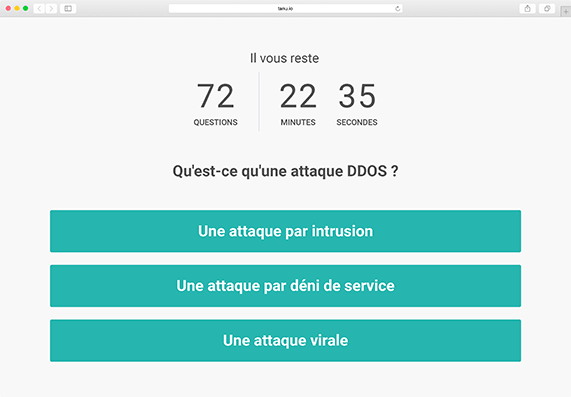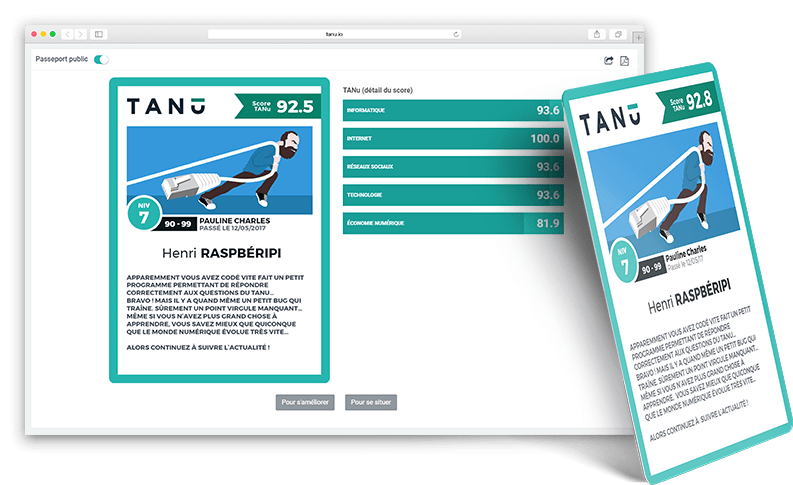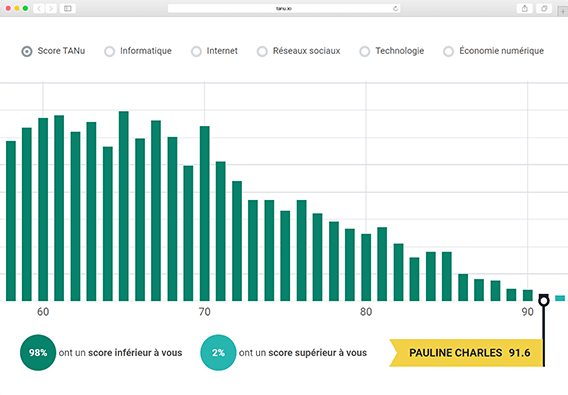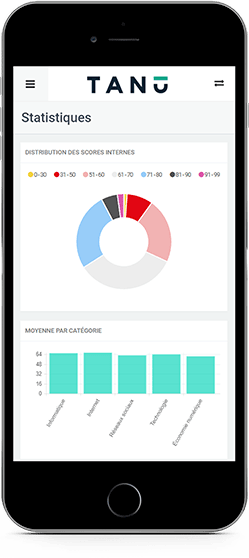
90 questions 30 minutes.
Each individual who takes the TANu test is subject to the same 30-minute test format, during which 90 questions must be answered.
The test is taken online.There is a function in order to track the remaining time and number of questions.
For each question there are 3 possible answers. It is possible to search online, however, with the awareness to not spend too much time!
The test is available in several languages / cultures. To date, French, English and Wolof are available.
The questions are organized by level. The first 30 questions are level 1, the next 30 are level 2 and the last 30 are level 3, allowing the candidate or collaborator to begin the test smoothly. The intention is not to create a stressful testing situation, rather to encourage the test-taker to open up to the diverse subjects covered by the TANu test, increase awareness of digital technology impacts and to want to go further into the subject after completing the test.
A 100% personalized test according to your objectivess
The TANU Skills test allows you to create assessment sessions by composing tests with the categories of your choice among those available on the platform and thus create a test adapted to your objectives.

TANU Skills : A test that adapts to your needs and sector of activity.
With TANu Skills, you can add one or more categories when creating a session.
Are you recruiting a Business Developer? Compose a test with Digital Economy, Cybersecurity, LinkedIn, Digital Marketing and Digital Law… You will then be able to know the skill level of your employees on your in-house CRM? Compose a test with one or more house categories.
Adding one category extends the test duration by 6 minutes and 18 questions.
Contact us
A library of sectoral and thematic categories
In addition to the TANU or TANU Safety categories, we provide a wide choice of sector categories: Fintech, E-tourism, E-commerce, E-media, Chartered accountant...
Office 365, Blockchain, Facebook, Linkedin, Social Selling, Twitter, Virtual Reality…. thematic categories are an inexhaustible source of configuration for the TANU Skills tests.
And we regularly add more as needs and technological developments evolve.
Thanks to a big data platform the level of difficulty of the questions is continuously reassessed.
Results are commented and easy to share.
The scores from each digital domain are presented in the form of a « passport » ou certifcate. These scores are valuable indicators of your employees’ digital culture.
The tester’s skill level is explained in an analysis of the results.


Position yourself to progress.
After the test the employee or candidate can compare his or her own digital awareness to that of other TANu testers.
The TANu School’s self-training platform is a great source for awareness and motivation for progress.
For the company : tools to analyze the results.
The company that sent the testing invitation sees the individual and overall results of its sessions. All results are also downloadable in CSV format to easily consolidate with internal data, thus refining your digital maturity diagnosis.
On the dashboard of your company account, find the statistics that concern your employees.


